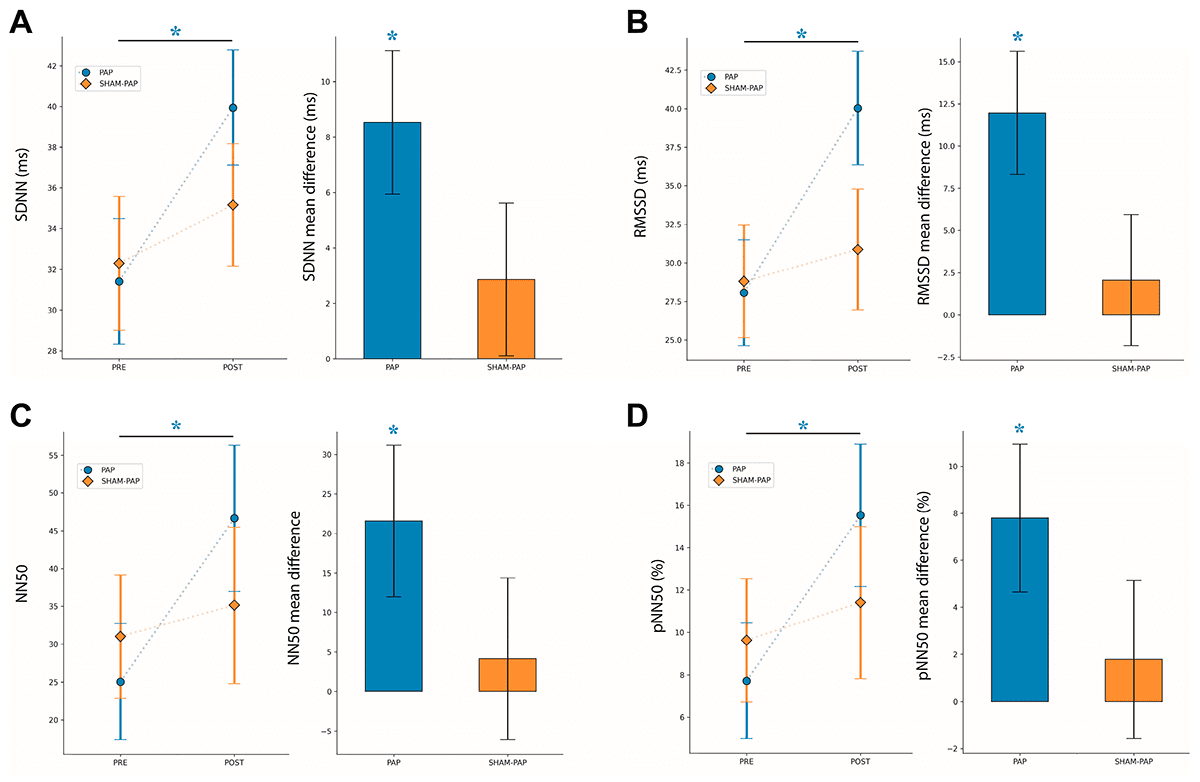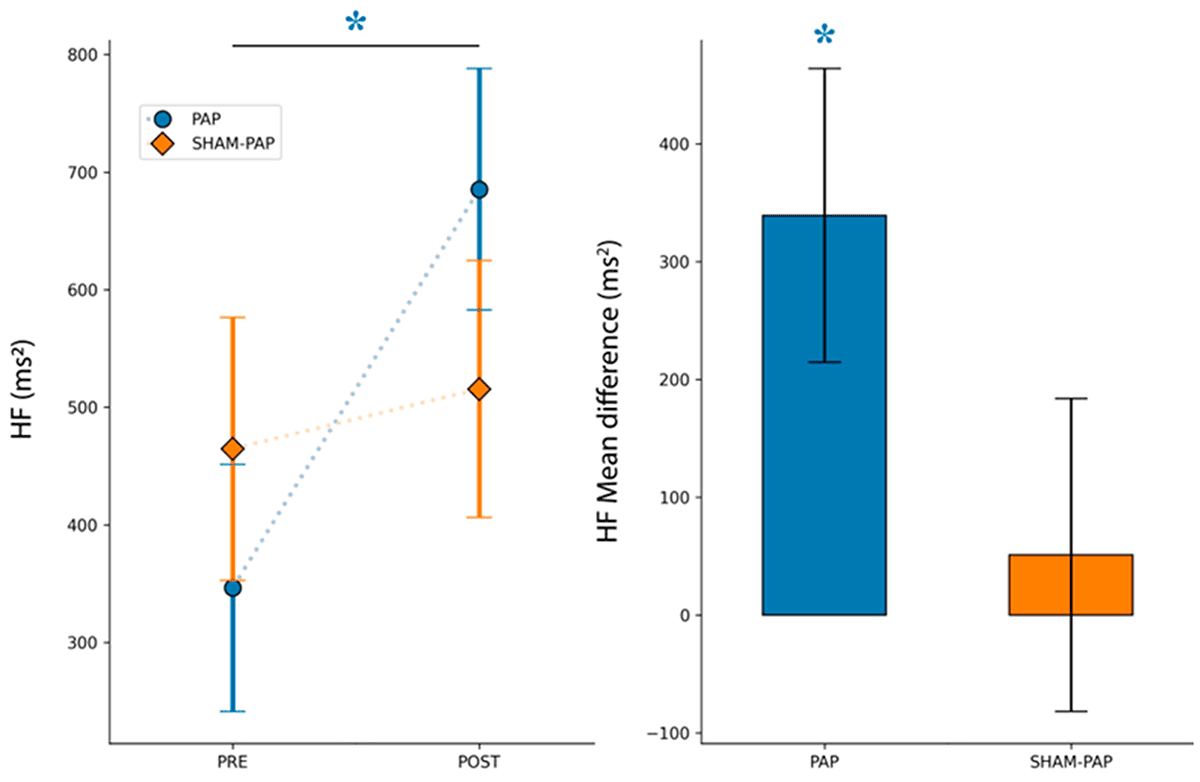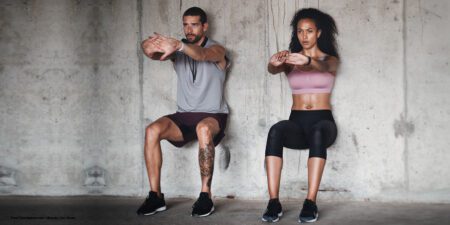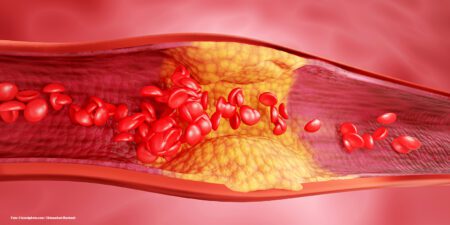Heart rate variability (HRV) is a term used to describe the variability in time intervals between heartbeats. In other words: The heart does not beat at a constant rate, even when we have an average beat of 60 beats per minute, the heart does not beat exactly every second. There are always variable times between beats. How come? Why are we interested in measuring
this variability?
The human body, on a physiological level, tries to maintain a state of balance, called homeostasis, which is necessary for optimal functioning. The body perceives stress through our senses, and sends this information to the brain, which decides how to react. Regardless of the source that causes stress, the body responds the same way.
Returning to our cardiac variability, the non-constant times between one beat and another reflect the activity of the autonomic nervous system in response to stimuli, i.e. sources of stress. When we encounter a form of stress, the autonomic nervous system carries the impulses received from the brain to the various muscles and organs of the human body. This mechanism of the autonomic nervous system controls nearly 90 % of the functions of the human body, both short-term ones such as breathing and more long-term ones.
To summarize, the autonomic nervous system controls and regulates many processes within the human body as well as our body’s responses to various forms of stress. HRV is regulated by the autonomic nervous system, in particular by the parasympathetic system (at least the easiest variables to interpret) and consequently it can reveal important information about our body’s reaction to stress, regardless of what generated it (training, a difficult period at work, etc.).
How is it measured?
HRV can be measured in various ways. The reference system is the electrocardiogram, although fortunately in recent years there have been technological developments that have brought these measurements somewhat into the hands of anyone with an interest, through the use of chest straps.
Once we have chosen a system for measuring HRV, unfortunately there is an additional complexity, which is that there are various ways to quantify cardiac variability. Normally, the most reliable methods and on which there is more consensus in the scientific community, are related to the measurement of the parasympathetic system, i.e. the one that deals with the state of recovery of the body. The most common way of quantifying cardiac variability is the so-called rMSSD, or a derivation thereof. rMSSD is a mathematical formula used to transform changes in beats over a period of 1 to 5 minutes into a single number indicating the activity level of the parasympathetic system.
What factors influence the data?
By the very nature of what HRV quantifies, i.e. the activity of the vagus nerve, or activity of the autonomic nervous system, everything affects it a bit. Let’s try to make a list of factors that have been associated with HRV in recent publications: they range from physical exercise, to nicotine, caffeine, medicines, time of day (circadian rhythm), alcohol, age, digestion of food or even water, illness , etc. – how then do we draw valid conclusions if the processes we measure are influenced by so many parameters? It is essential to measure cardiac variability in order to limit the effect of so-called external stress sources as much as possible: the simplest way to create a so-called reproducible context in which to take the measurement is to do it as soon as you wake up, before exercising, eating, getting to work, or before being influenced by the various forms of everyday stress.
Why is this data important for an athlete? How should it be interpreted?
In the context of athletes, HRV application and monitoring are more prevalent due to the ability to quantify the form of stress, i.e. training. The relationship between training and HRV is evident and has been proven several times in various scientific studies, as training is a very high form of stress for the body. For other applications, for example related to physical and mental health, it can be much more complex to identify and quantify the sources of stress, making it difficult to implement feedback as well as then modify our plans to improve things.
In professional athletes, the risk of overtraining is always present, due to very high training volumes. However, amidst all of this, we must not overlook the athlete’s body response to the training program. Is it adapting well? Or is he/she struggling more than expected? An objective measure of stress status can help us implement changes on the go. For the non-professional athlete, perhaps who trains when he/she doesn’t have to devote time to work or family, measuring HRV can be even more important, as all forms of stress are detected in this way, and we can better understand when it is appropriate to slow down with training, or when we can indulge in an extra intense session, always with the aim of improving physical performance in the long term.
Speaking of stress, even after an injury, a therapeutic process begins, HRV can provide us with important data to see how the therapy works.
Our research
Published in the „International Journal of Environmental Research and Public Health“ we evaluated how HRV can be used to verify the positive effects of a therapy on subjects with orthopedic injuries. Specifically, we have seen how combining classic physiotherapy therapy with technologically advanced tools such as the papimi Ion-Induction-Therapy (IIT) within the same session leads to an improvement in all HRV parameters, a sign of an effective therapy Fig. 1 + 2.


* Modulation of Heart Rate Variability following PAP Ion Magnetic Induction Intervention in Subjects with Chronic Musculoskeletal Pain: A Pilot Randomized Controlled Study
Viti et.al. Int J Environ Res Public Health. 2023 Feb 22;20(5):3934. doi: 10.3390/ijerph20053934.
https://pubmed.ncbi.nlm.nih.gov/36900946/
Autoren
ist Experte auf dem Gebiet der Bewegungsphysiologie mit den Schwerpunkten Biomechanik, Trainingsphysiologie und sportliche Bewertung. Mit 20 Jahren Erfahrung hat er sein Fachwissen in diesen Bereichen verfeinert und arbeitet derzeit als Sportwissenschaftler für das Italienische Olympische Komitee (CONI).




